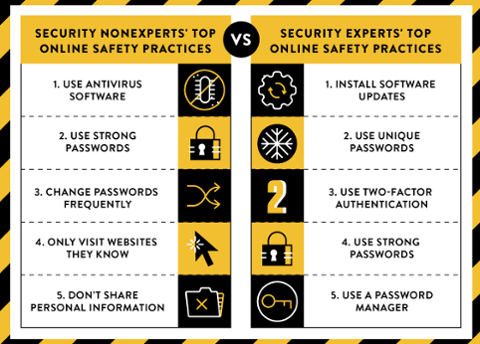Although corporate training budgets continue to shrink, tech professionals still need to keep their skills up to date. One possible solution is the growing range of free Massive Online Open Courses, or MOOCs. Two of the major players in the area, Coursera and edX, have double-digit expansions of colleges offering courses through their platforms. Also, in June non-profit edX released its software as open source.
The Players
Coursera and edX are two of the Big Three in open online learning. The third, Udacity, focuses on practical skills, and so has a smaller set of offerings. The courses use five to 10 minute video lectures, multiple choice quizzes, peer graded projects and social media discussions to teach everything from humanities to the hard sciences and technology. Like classroom-based courses, MOOCs have beginning and ending dates, homework and deadlines. “EdX and Coursera have more of the ‘name’ institutions,” observes Dice Software Engineering Talent Community Guide Catherine Powell. “Udacity is more about the specific professors than about the institutions, although there are a few ‘name’ professors.”
edX
“I'd be partial to use edX because you get top-notch colleges and with that, top notch teaching,” says South Florida Business Analyst and Business Analysis Community Guide Steven Gara. “A number of prestigious colleges are signing onto venues like that now.” Before adding 15 institutions from across the globe last month, edX focused solely on elite universities. Founded by Harvard and MIT, the non-profit group added the University of California, Berkeley, the University of Texas System, Wellesley College, Georgetown University, McGill University, Australian National University, University of Toronto, École Polytechnique Fédérale de Lausanne, Delft University of Technology and Rice University before more than doubling its size with 15 universities from Asia, Australia, Europe and the U.S. last month. edX classes that our community guides suggested tech professionals to consider include Foundations of Computer Graphics and Software as a Service, both presented by the University of California at Berkeley. Stanford, which is not part of edX, agreed in February to collaborate with the consortium by adding features from its ed2go courseware to the edX platform, which was set to be released via the Affero GPL on June 1. The platform includes an authoring tool, an API for integrating learning objects and a learning management system, basically a content management system for delivering educational programs. Having a free and open MOOC platform will make it possible for schools and other organizations to create and deliver customized courses. In addition to major universities, edX has also partnered with educational content firms Cengage and Pearson. Cengage produces texts for edX courses, and Pearson built a webcam system for proctoring exams.
Coursera
If edX is seen as exclusive, Coursera is the behemoth. It is by no means devoid of academic powers, however. The company, founded by two Stanford professors, includes among its 70 partners five of the eight Ivy League schools and Cal Tech, as well as major research universities from around the U.S., Canada, Europe, Australia and Asia. In May, 10 state university systems forged an agreement to not only offer courses through Coursera, but also to experiment with new ways of offering them. For example, one method being explored is the “Guided Class,” in which students listen to lectures on their own time, then use class time for hands-on work overseen by the professor. The rigor of Coursera’s classes varies greatly. For example, a philosophy course given through the University of Edinburgh requires only that students pass all weekly tests with a grade of 70 or better. A class on gamification, given through the University of Pennsylvania, requires not only passing weekly exams, but also completing three projects, evaluating five students’ work on each of the assignments, providing self-evaluations and passing a final exam. In terms of documenting your coursework, some schools offer both certificates of completion and certificates with distinction. Some give certificates of completion only. Some courses award no certificates at all.
Udacity
Udacity works with an entirely different model than edX and Coursera. The company places an emphasis on hard skills and offers courses in only business, computer science, mathematics, physics and psychology. Instead of quizzes, the courses require completion of project-based assignments. While professors teach most of the courses, the classes aren’t given under the auspices of their universities. Some, such as Introduction to Physics, aren’t taught by professors at all. However, there are two notable exceptions: San Jose State University offers college credit for five classes at $150 each, and Georgia Tech offers a $7,000 master’s degree program.
Retention: The Big Pitfall
With MOOCs, the expression “you get what you pay for” is turned on its side. It’s better said, “you commit to what you pay for.” Overall, the classes have a completion rate of less than 10 percent. However, that number skyrockets when students have even a small stake in completing the course. For example, of the 66,438 students who registered for Kevin Werbach’s popular Gamification course on Coursera, only 5,592 – or 8.4 percent – completed all assignments and earned the 70 percent score necessary to earn a statement of accomplishment. However, of the 2,189 students who paid $40 for the Signature Track, which awards a Verified Certificate that confirms the identity of students who complete the course, 1,506 – or 68 percent – successfully completed it.
Which is Best for Me?
Choosing the best programs is a lot like choosing a college, says Community Guide Powell. “At least for my community, this is a little bit like asking ‘what college should I go to?’” she says. “The answer will be different for different community members. Some will be looking for specific topics or courses to learn about a new area. Others will want a degree. Others will need courses in languages other than English.” When evaluating MOOC offerings, some of the questions to consider are whether you want a degree or college credits. Would paying for classes provide more incentive for you to complete the course? Is it important to you to learn from professors who are well regarded in their fields?
Courses to consider
Game Development
- Interactive 3D Graphics [Udacity]
- Foundations of Computer Graphics [edX]
Mobile Development
- Internet History, Technology, and Security [Coursera]
- Startup Engineering [Coursera]
- Introduction To Programming for Musicians and Digital Artists [Coursera]
- Software As A Service [edX]
Linux
- Computer Networks [Coursera]
Java
- Introduction to Programming in Java [Udacity]
- Creating Android Apps [Coursera]
Security
- Malicious Software and its Underground Economy: Two Sides to Every Story [Coursera]
- Internet History, Technology, and Security [Coursera]
- Cryptography II [Coursera]
- Computer Security [Coursera]
- Information Security and Risk Management in Context [Coursera]


